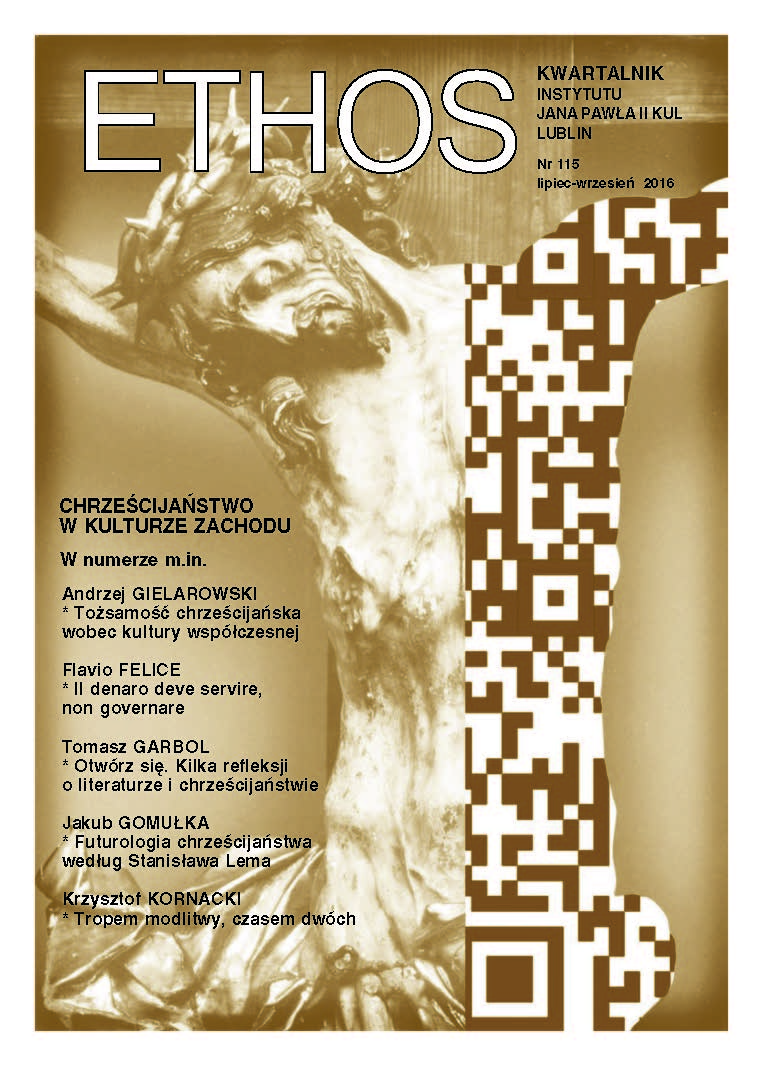Kilka refleksji na temat prób rekonstrukcji wierzeń mieszkańców ziem polskich we wczesnym średniowieczu
Some Reflections on the Attempts to Reconstruct the Beliefs of the Inhabitants of the Polish Lands in the Early Middle Ages
Author(s): Joanna WawrzeniukSubject(s): Christian Theology and Religion, History, Social history, Middle Ages, Theology and Religion, History of Religion
Published by: Katolicki Uniwersytet Lubelski Jana Pawła II - Instytut Jana Pawła II, Wydział Filozofii
Keywords: Slavic paganism; Slavic mythology; early medieval beliefs; magical rites in the early Middle Ages; early medieval amulets; Christianization of Poland
Summary/Abstract: The beliefs of the inhabitants of the Polish lands before the Christianization have not been scrutinized yet despite the efforts of researchers representing various disciplines. A major obstacle in the research is the lack of written native sources, while those which are available relate to only a small number of issues of Slavic paganism in the Polabian Slavs’ and Kievan Rus’ territories. Later sources include criticism of the worship of household gods by the Slavs; the authors criticize their habits of amulet wearing and describe their magical rites. While the linguistic data available is not of help to the researchers, archaeological research provides more information. Among the main gods worshipped by pagan Slavs was the thunder-god, which personified heavenly fire. Archaeologists have confi rmed that the cult of the thunder-god was held in temples (e.g. in Wolin and in Wrocław) and in special cult halls (e.g. in Lubomia and in Chodlik). Fire was also worshipped as the god of the sun and, in its earthly shape, through the cult of the sacred fi re place. Medieval chroniclers mention nature worship, and indeed natural phenomena also served as sacred places. Mountain tops and small hills on which trenches and shafts were constructed (e.g. on Mount Ślęża, on Mount Łysa Góra, on Mount Lech in Gniezno, in Radzikowo in Mazovia, in Mołoczki in Podlachia, and in Rowokół) were venerated. Other objects of veneration were the first ‘symbolic’ strongholds (in Haćki), groves (in Kleczanów), single trees, as well as ponds and lakes where artifacts were deposited (e.g. Lake Żarnowiec). Worship of beaches and of islands was also popular (e.g. in Ostrów Lednicki and in Lake Zarańskie). Later ethnographical evidence has demonstrated that stones, in particular large ones, were also worshiped. In the early Middle Ages inhabitants of the Polish lands believed in the existence of household, destination, lineage and ancestral demons: sacrifi ces were offered to them and their comfort was taken care of. These facts have also been confirmed by archaeological research. An important source of information on pre-Christian beliefs in the territories in question is provided by analyses of graves (of both cremation and inhumation types): of their construction as well as of the offerings for the dead made by their living kin. In the early Middle Ages amulets made predominantly from plants, bones and tusks of animals were frequently worn. Also other materials were used for making amulets, and special shapes were preferred. Actually, any object could serve as an amulet. While analyzing the progress of Christianization in the period in question, researchers have observed that the mentality of the inhabitants of the Polish lands was largely shaped by a magical-religious system of beliefs combining the old pagan tradition, with its myths about the sky, the sun, the moon, the stars, the thunders, and the demons, with the Christian religion.
Journal: Ethos. Kwartalnik Instytutu Jana Pawła II KUL
- Issue Year: 29/2016
- Issue No: 3
- Page Range: 46-65
- Page Count: 20
- Language: Polish
- Content File-PDF

